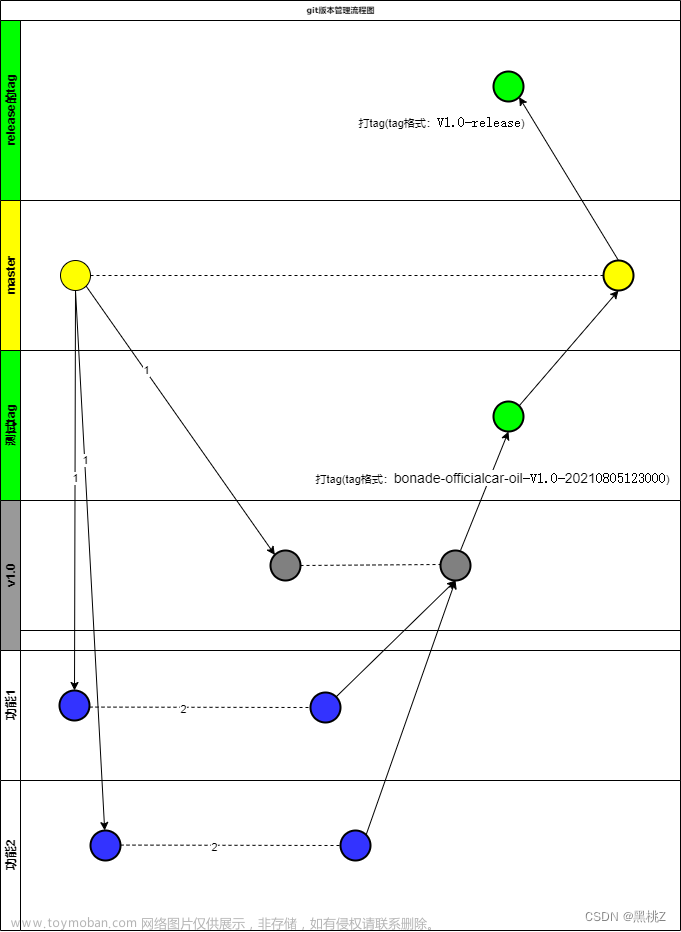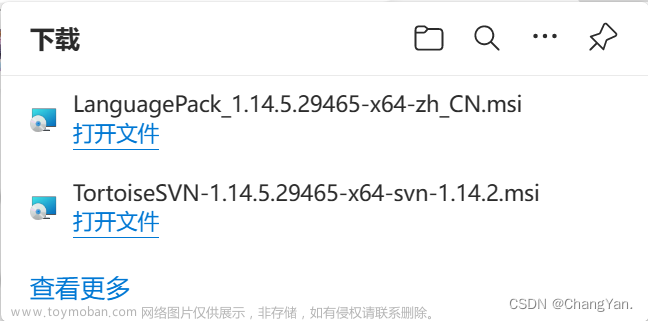Stable-Baselines 3 部分源代码解读 ./ppo/ppo.py
前言
阅读PPO相关的源码,了解一下标准库是如何建立PPO算法以及各种tricks的,以便于自己的复现。
在Pycharm里面一直跳转,可以看到PPO类是最终继承于基类,也就是这个py文件的内容。
所以阅读源码就先从这里开始。: )
import 包
import warnings
from typing import Any, Dict, Optional, Type, TypeVar, Union
import numpy as np
import torch as th
from gym import spaces
from torch.nn import functional as F
from stable_baselines3.common.on_policy_algorithm import OnPolicyAlgorithm
from stable_baselines3.common.policies import ActorCriticCnnPolicy, ActorCriticPolicy, BasePolicy, MultiInputActorCriticPolicy
from stable_baselines3.common.type_aliases import GymEnv, MaybeCallback, Schedule
from stable_baselines3.common.utils import explained_variance, get_schedule_fn
PPO 类
这是面向使用者的浅层的PPO,也就是能直接调用的类
作者在源码中给出了PPO的论文、引用了谁的源代码编写的以及一个引进PPO的讲解。
policy、env和learning_rate三者与基类base-class.py的一致
n_steps表示每次更新前需要经过的时间步,作者在这里给出了n_steps * n_envs的例子,可能的意思是,如果环境是重复的多个,打算做并行训练的话,那么就是每个子环境的时间步乘以环境的数量
batch_size经验回放的最小批次信息
gamma、gae_lambda、clip_range、clip_range_vf均是具有默认值的参数,分别代表“折扣因子”、“GAE奖励中平衡偏置和方差的参数”、“为网络参数而限制幅度的范围”、“为值函数网络参数而限制幅度的范围”
normalize_advantage标志是否需要归一化优势(advantage)
ent_coef、vf_coef损失计算的熵系数
max_grad_norm最大的梯度长度,梯度下降的限幅
use_sde、sde_sample_freq是状态独立性探索,只适用于连续环境,与基类base-class.py的一致
target_kl限制每次更新时KL散度不能太大,因为clipping限幅不能防止大量更新文章来源:https://www.toymoban.com/news/detail-648898.html
剩下的参数与基类base-class.py的一致文章来源地址https://www.toymoban.com/news/detail-648898.html
class PPO(OnPolicyAlgorithm):
"""
Proximal Policy Optimization algorithm (PPO) (clip version)
Paper: https://arxiv.org/abs/1707.06347
Code: This implementation borrows code from OpenAI Spinning Up (https://github.com/openai/spinningup/)
https://github.com/ikostrikov/pytorch-a2c-ppo-acktr-gail and
Stable Baselines (PPO2 from https://github.com/hill-a/stable-baselines)
Introduction to PPO: https://spinningup.openai.com/en/latest/algorithms/ppo.html
:param policy: The policy model to use (MlpPolicy, CnnPolicy, ...)
:param env: The environment to learn from (if registered in Gym, can be str)
:param learning_rate: The learning rate, it can be a function
of the current progress remaining (from 1 to 0)
:param n_steps: The number of steps to run for each environment per update
(i.e. rollout buffer size is n_steps * n_envs where n_envs is number of environment copies running in parallel)
NOTE: n_steps * n_envs must be greater than 1 (because of the advantage normalization)
See https://github.com/pytorch/pytorch/issues/29372
:param batch_size: Minibatch size
:param n_epochs: Number of epoch when optimizing the surrogate loss
:param gamma: Discount factor
:param gae_lambda: Factor for trade-off of bias vs variance for Generalized Advantage Estimator
:param clip_range: Clipping parameter, it can be a function of the current progress
remaining (from 1 to 0).
:param clip_range_vf: Clipping parameter for the value function,
it can be a function of the current progress remaining (from 1 to 0).
This is a parameter specific to the OpenAI implementation. If None is passed (default),
no clipping will be done on the value function.
IMPORTANT: this clipping depends on the reward scaling.
:param normalize_advantage: Whether to normalize or not the advantage
:param ent_coef: Entropy coefficient for the loss calculation
:param vf_coef: Value function coefficient for the loss calculation
:param max_grad_norm: The maximum value for the gradient clipping
:param use_sde: Whether to use generalized State Dependent Exploration (gSDE)
instead of action noise exploration (default: False)
:param sde_sample_freq: Sample a new noise matrix every n steps when using gSDE
Default: -1 (only sample at the beginning of the rollout)
:param target_kl: Limit the KL divergence between updates,
because the clipping is not enough to prevent large update
see issue #213 (cf https://github.com/hill-a/stable-baselines/issues/213)
By default, there is no limit on the kl div.
:param tensorboard_log: the log location for tensorboard (if None, no logging)
:param policy_kwargs: additional arguments to be passed to the policy on creation
:param verbose: Verbosity level: 0 for no output, 1 for info messages (such as device or wrappers used), 2 for
debug messages
:param seed: Seed for the pseudo random generators
:param device: Device (cpu, cuda, ...) on which the code should be run.
Setting it to auto, the code will be run on the GPU if possible.
:param _init_setup_model: Whether or not to build the network at the creation of the instance
"""
# PPO策略中限制的可以用字符串的策略就是下面三个
# 连续环境使用时一般会提示选择"MultiInputPolicy"
policy_aliases: Dict[str, Type[BasePolicy]] = {
"MlpPolicy": ActorCriticPolicy,
"CnnPolicy": ActorCriticCnnPolicy,
"MultiInputPolicy": MultiInputActorCriticPolicy,
}
# 输入的一些默认参数表列可以为调参提供参考
def __init__(
self,
policy: Union[str, Type[ActorCriticPolicy]],
env: Union[GymEnv, str],
learning_rate: Union[float, Schedule] = 3e-4,
n_steps: int = 2048,
batch_size: int = 64,
n_epochs: int = 10,
gamma: float = 0.99,
gae_lambda: float = 0.95,
clip_range: Union[float, Schedule] = 0.2,
clip_range_vf: Union[None, float, Schedule] = None,
normalize_advantage: bool = True,
ent_coef: float = 0.0,
vf_coef: float = 0.5,
max_grad_norm: float = 0.5,
use_sde: bool = False,
sde_sample_freq: int = -1,
target_kl: Optional[float] = None,
tensorboard_log: Optional[str] = None,
policy_kwargs: Optional[Dict[str, Any]] = None,
verbose: int = 0,
seed: Optional[int] = None,
device: Union[th.device, str] = "auto",
_init_setup_model: bool = True,
):
super().__init__(
policy,
env,
learning_rate=learning_rate,
n_steps=n_steps,
gamma=gamma,
gae_lambda=gae_lambda,
ent_coef=ent_coef,
vf_coef=vf_coef,
max_grad_norm=max_grad_norm,
use_sde=use_sde,
sde_sample_freq=sde_sample_freq,
tensorboard_log=tensorboard_log,
policy_kwargs=policy_kwargs,
verbose=verbose,
device=device,
seed=seed,
_init_setup_model=False,
supported_action_spaces=(
spaces.Box,
spaces.Discrete,
spaces.MultiDiscrete,
spaces.MultiBinary,
),
)
# 合理性、完整性检查,如果需要normalize的话,需要保证batch_size参数大于1
# Sanity check, otherwise it will lead to noisy gradient and NaN
# because of the advantage normalization
if normalize_advantage:
assert (
batch_size > 1
), "`batch_size` must be greater than 1. See https://github.com/DLR-RM/stable-baselines3/issues/440"
if self.env is not None:
# Check that `n_steps * n_envs > 1` to avoid NaN
# when doing advantage normalization
buffer_size = self.env.num_envs * self.n_steps
# 如果buffer_size等于1但是又需要normalize_advantage标志时
# 报错,输出当前的需要运行的时间步和当前的环境数量
assert buffer_size > 1 or (
not normalize_advantage
), f"`n_steps * n_envs` must be greater than 1. Currently n_steps={self.n_steps} and n_envs={self.env.num_envs}"
# rollouts的池子大小必须与最小池子数量mini-batch一致,也就是能整除
# 这样才能一份一份的导入(我的理解是这样)
# Check that the rollout buffer size is a multiple of the mini-batch size
untruncated_batches = buffer_size // batch_size
# 不是整除的话,就爆出警告
if buffer_size % batch_size > 0:
warnings.warn(
f"You have specified a mini-batch size of {batch_size},"
f" but because the `RolloutBuffer` is of size `n_steps * n_envs = {buffer_size}`,"
f" after every {untruncated_batches} untruncated mini-batches,"
f" there will be a truncated mini-batch of size {buffer_size % batch_size}\n"
f"We recommend using a `batch_size` that is a factor of `n_steps * n_envs`.\n"
f"Info: (n_steps={self.n_steps} and n_envs={self.env.num_envs})"
)
self.batch_size = batch_size
self.n_epochs = n_epochs
self.clip_range = clip_range
self.clip_range_vf = clip_range_vf
self.normalize_advantage = normalize_advantage
self.target_kl = target_kl
if _init_setup_model:
self._setup_model()
def _setup_model(self) -> None:
super()._setup_model()
# Transform (if needed) learning rate and clip range (for PPO) to callable.
# 将输入的限制幅度转变成可以调用的变量
# Initialize schedules for policy/value clipping
self.clip_range = get_schedule_fn(self.clip_range)
# 对self.clip_range_vf参数做数据类型和正值检查
if self.clip_range_vf is not None:
if isinstance(self.clip_range_vf, (float, int)):
assert self.clip_range_vf > 0, "`clip_range_vf` must be positive, " "pass `None` to deactivate vf clipping"
self.clip_range_vf = get_schedule_fn(self.clip_range_vf)
def train(self) -> None:
"""
Update policy using the currently gathered rollout buffer.
"""
# 将模型设置成训练模式,这会影响到batch norm和正则化
# Switch to train mode (this affects batch norm / dropout)
self.policy.set_training_mode(True)
# 更新学习率,如果学习率是与当前进度有关的数值
# Update optimizer learning rate
self._update_learning_rate(self.policy.optimizer)
# 计算限幅参数,输入的是与当前进度有关的学习率,动态变化包括clip_range和clip_range_vf
# 也就是策略网络和价值网络
# Compute current clip range
clip_range = self.clip_range(self._current_progress_remaining)
# Optional: clip range for the value function
if self.clip_range_vf is not None:
clip_range_vf = self.clip_range_vf(self._current_progress_remaining)
# 初始化各种损失的记录
# 熵损失、策略梯度损失、价值损失和限制参数
entropy_losses = []
pg_losses, value_losses = [], []
clip_fractions = []
# 设置continue_training为True,表示现在处于持续性训练状态
continue_training = True
# train for n_epochs epochs
# self.n_epochs是训练次数
for epoch in range(self.n_epochs):
# 记录近似的KL散度数值
approx_kl_divs = []
# Do a complete pass on the rollout buffer
# 将rollout_buffer池子用batch_size做分割,遍历每一个循环
for rollout_data in self.rollout_buffer.get(self.batch_size):
# 取出每一小批的动作数据
actions = rollout_data.actions
# 如果是离散动作空间的话,专程浮点型数据并拉直
if isinstance(self.action_space, spaces.Discrete):
# Convert discrete action from float to long
actions = rollout_data.actions.long().flatten()
# 判断是否使用了状态独立性探索,如果使用了状态独立性探索
# 那么就重置噪声
# Re-sample the noise matrix because the log_std has changed
if self.use_sde:
self.policy.reset_noise(self.batch_size)
# 根据策略、观测的数据和动作,输出价值、对数概率以及熵
values, log_prob, entropy = self.policy.evaluate_actions(rollout_data.observations, actions)
# 再把价值再做拉直
values = values.flatten()
# 对经验池子的advantages做Normalize
# Normalize的公式是advantages里面的数值减去advantages的均值
# 然后再除以advantages的均值的方差(自己复现的话,也可以调用其他库的方法)
# Normalize advantage
advantages = rollout_data.advantages
# Normalization does not make sense if mini batchsize == 1, see GH issue #325
if self.normalize_advantage and len(advantages) > 1:
advantages = (advantages - advantages.mean()) / (advantages.std() + 1e-8)
# 输出先后动作概率的差异值
# ratio between old and new policy, should be one at the first iteration
ratio = th.exp(log_prob - rollout_data.old_log_prob)
# 策略的损失是优势数值乘以比率,以及限制幅度的优势之间的负最小值
# 就是论文的公式
# clipped surrogate loss
policy_loss_1 = advantages * ratio
policy_loss_2 = advantages * th.clamp(ratio, 1 - clip_range, 1 + clip_range)
policy_loss = -th.min(policy_loss_1, policy_loss_2).mean()
# 记录在刚才初始化的日志记录器里面
# Logging
pg_losses.append(policy_loss.item())
clip_fraction = th.mean((th.abs(ratio - 1) > clip_range).float()).item()
clip_fractions.append(clip_fraction)
# 如果价值没有限幅的话,就直接输出
# 有限制幅度的话,那么就是限幅增量th.clamp()+原来的数值
if self.clip_range_vf is None:
# No clipping
values_pred = values
else:
# Clip the difference between old and new value
# NOTE: this depends on the reward scaling
values_pred = rollout_data.old_values + th.clamp(
values - rollout_data.old_values, -clip_range_vf, clip_range_vf
)
# 构建损失函数并记录下来
# Value loss using the TD(gae_lambda) target
value_loss = F.mse_loss(rollout_data.returns, values_pred)
value_losses.append(value_loss.item())
# 如果没有熵损失,那么就直接取得均值的副对数概率,如果有熵损失那么就是熵损失的均值
# Entropy loss favor exploration
if entropy is None:
# Approximate entropy when no analytical form
entropy_loss = -th.mean(-log_prob)
else:
entropy_loss = -th.mean(entropy)
entropy_losses.append(entropy_loss.item())
# 最终的损失就是策略损失和加了系数的熵损失和价值函数损失
loss = policy_loss + self.ent_coef * entropy_loss + self.vf_coef * value_loss
# Calculate approximate form of reverse KL Divergence for early stopping
# see issue #417: https://github.com/DLR-RM/stable-baselines3/issues/417
# and discussion in PR #419: https://github.com/DLR-RM/stable-baselines3/pull/419
# and Schulman blog: http://joschu.net/blog/kl-approx.html
# 计算近似KL散度并记录在列表中
with th.no_grad():
log_ratio = log_prob - rollout_data.old_log_prob
approx_kl_div = th.mean((th.exp(log_ratio) - 1) - log_ratio).cpu().numpy()
approx_kl_divs.append(approx_kl_div)
# 如果target_kl存在且近似KL散度太大了,也就是更新程度太大,就提前结束,并报错
if self.target_kl is not None and approx_kl_div > 1.5 * self.target_kl:
continue_training = False
if self.verbose >= 1:
print(f"Early stopping at step {epoch} due to reaching max kl: {approx_kl_div:.2f}")
break
# 对损失做优化
# Optimization step
self.policy.optimizer.zero_grad()
loss.backward()
# 限制幅度避免较大的更新
# Clip grad norm
th.nn.utils.clip_grad_norm_(self.policy.parameters(), self.max_grad_norm)
self.policy.optimizer.step()
self._n_updates += 1
if not continue_training:
break
explained_var = explained_variance(self.rollout_buffer.values.flatten(), self.rollout_buffer.returns.flatten())
# Logs
self.logger.record("train/entropy_loss", np.mean(entropy_losses))
self.logger.record("train/policy_gradient_loss", np.mean(pg_losses))
self.logger.record("train/value_loss", np.mean(value_losses))
self.logger.record("train/approx_kl", np.mean(approx_kl_divs))
self.logger.record("train/clip_fraction", np.mean(clip_fractions))
self.logger.record("train/loss", loss.item())
self.logger.record("train/explained_variance", explained_var)
if hasattr(self.policy, "log_std"):
self.logger.record("train/std", th.exp(self.policy.log_std).mean().item())
self.logger.record("train/n_updates", self._n_updates, exclude="tensorboard")
self.logger.record("train/clip_range", clip_range)
if self.clip_range_vf is not None:
self.logger.record("train/clip_range_vf", clip_range_vf)
def learn(
self: SelfPPO,
total_timesteps: int,
callback: MaybeCallback = None,
log_interval: int = 1,
tb_log_name: str = "PPO",
reset_num_timesteps: bool = True,
progress_bar: bool = False,
) -> SelfPPO:
# 这个函数主要是给用户做调用,在初始化PPO类之后,将这些参数引进来就可以
# total_timesteps总的需要的时间步
return super().learn(
total_timesteps=total_timesteps,
callback=callback,
log_interval=log_interval,
tb_log_name=tb_log_name,
reset_num_timesteps=reset_num_timesteps,
progress_bar=progress_bar,
)
到了这里,关于Stable-Baselines 3 部分源代码解读 3 ppo.py的文章就介绍完了。如果您还想了解更多内容,请在右上角搜索TOY模板网以前的文章或继续浏览下面的相关文章,希望大家以后多多支持TOY模板网!











